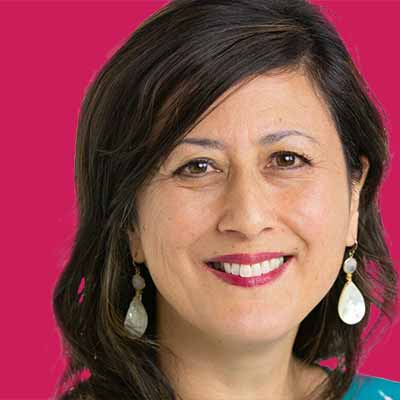Embodied, nonverbal literacies encompass ways of making and communicating meaning that are not limited to talking, reading, and writing. Embodied literacies draw on all the senses, and use tactile, gestural, spatial, and visual resources for making meaning[1]. Traditionally, research has tended to focus exclusively on linguistic aspects of literacy, such as talking, reading, and writing. Recent studies in early childhood education have highlighted the value of considering the multiple, holistic ways that children make and share meaning using different modes, including gestures, images, and movements as well as sounds, words, and print[2].
In any early childhood context, there will be multiple examples of children engaging in embodied literacies as part of their everyday social interactions. For example, imagine the following scenarios:
- a group of children enacting a story together as they engage in role-play with diggers in the sand using vehicles, objects, actions and noises such as ‘vroom’ and ‘beep beeeeep’ with varying rhythm, pitch, and loudness
- an infant or toddler who looks, listens and points, but is not yet using spoken words
- a child who is learning to use deaf sign language (such as NZSL), key words, gesture, or braille as their main system of communication
- a child who has recently immigrated to New Zealand and speaks a home language that is different to English, the main language used in their early childhood centre
- two children searching on Google with their teacher to find digital images to support their inquiry into caring for ocean environments
- a child who has a communication disability and uses an augmentative or alternative communication system (such as low-tech picture systems like a photo book, or high-tech assistive devices such as an iPad).
In addition to oral, audio, and written literacies, children make and share meaning with others in embodied, nonverbal ways during play and social interactions. There are many different ways young children might engage with embodied literacies through play in their early childhood centre and home contexts[3]. These include:
- Gestural literacies, such as learning how to make and interpret facial expressions and body actions, dance, dress up, feel, pretend
- Tactile literacies, like exploring how to mix, squish, dig, splash, and bake
- Spatial literacies, which involve making meaning through positioning, such as running, jumping, rolling, swinging, climbing, building, and using puzzles and maps
- Visual literacies, which involve expressing meaning using visual media such as paint, drawing, photos, and digital technologies.
The above list teases out some examples of meaning-making in different forms, but it must also be acknowledged that, in reality, people use multiple modes to communicate at any given time. For example, think about the last time you had a face-to-face conversation with someone – it is likely that it involved not only words but also mutual facial expressions, gesture, body actions, and perhaps even touch and noises too! Communication and literacies typically involve people selecting combinations of modes to suit their purpose and context for making meaning.
Why embodied literacies are important
It is natural for young children to express themselves in multimodal, whole-body, and sensory ways rather than privileging one form of communication over others[4]. Opportunities for sensory, embodied exploration in early childhood settings allow children to express themselves holistically and in ways that might include, but are not limited to, talk and print. Such opportunities value and build on children’s strengths and interests, as well as the cultural patterns of making meaning they bring with them from their home environments. In this way, embodied literacies recognise the wide range of resources children have available for learning. This is not only important for infants and toddlers who cannot yet talk, but also for children who are learning multiple languages or who communicate in non-verbal ways, such as through sign language or via augmentative and alternative communication (AAC) systems. The more early childhood teachers understand about multimodal literacies, the more they will be able to create an environment where young children can communicate and learn via multiple forms[5]. This creates many possible avenues of access for children to create and share meaning beyond narrow conceptualisations of literacy limited only to print and talk.
Strategies for supporting embodied literacies in early childhood settings
Teachers can intentionally support embodied literacies in early childhood settings by taking time to observe the variety of ways that children share meaning with others during everyday interactions and play. Teachers can extend learning by noticing, recognising, and responding to children’s multimodal signs of meaning, which may be as subtle as an eye blink, a point, or a shrug of the shoulders. Intentional teaching practices also include the documentation of ways that children communicate with others, which is essential to recognising patterns and progress over time. Sharing observations as a teaching team, as well as with children and families, is also critical in order to build a holistic picture of children’s communicative strengths, capabilities, and challenges.
Endnotes
[1] Smoldon, E., & Howell, M. (2014). Ideas for play: Literacy. Playful ways to grow children’s communication in the early years. Ako Books.
[2] Flewitt, R. (2008). Multimodal literacies. In J. Marsh, & E. Hallet (Eds.), Desirable literacies approaches to language and literacy in the early years (2nd ed., pp. 122-139). Sage;
Taylor, S. V., & Leung, C. B. (2020). Multimodal literacy and social interaction: Young children’s literacy learning. Early Childhood Education Journal, 48(1), 1-10.
[3] Smoldon & Howell, 2014.
[4] Smoldon & Howell, 2014.
[5] Taylor & Leung, 2020.
By Amanda White

